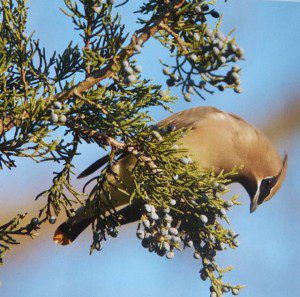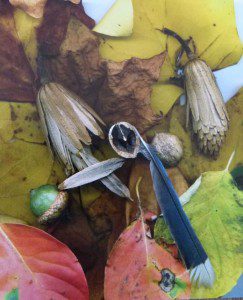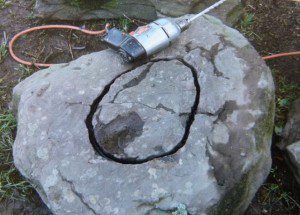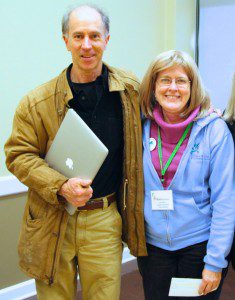The Living Landscape: Summary of Rick Darke’s Talk

The authors’ deep knowledge of natural areas like this meadow provide the basis of their advice on using natives at home. Photo from book.
Rick Darke recently gave a talk on his new book, co-authored with Doug Tallamy, The Living Landscape; sponsored by our Prince William Wildflower Society Chapter and delivered to a full house of over 180 attendees. This new book is much more than a traditional “how-to” design manual. It is a thoughtful analysis of the natural harmony of relationships in a functioning ecosystem, how to observe and understand those relationships first, and then, how to apply what you know to your own planting environment. The book is written in simple, accessible language, and enhanced with beautiful photos that help make learning a pleasure. A valuable resource even if you are not gardening.
One of our VNPS members, Dee Brown, took the time to summarize some of Mr. Darke’s main points relating to home landscaping, and has kindly shared them with us here:
Mr. Darke’s main point, in a nutshell, is: If you replicate nature’s layering with native plants, you will greatly increase the biodiversity (living organisms) of the area. Most of his talk consisted of photos illustrating this point. He used his own 1½ acre yard to document this effect. He began with the usual sterile suburban yard consisting of grass with a few trees scattered through it. Over time he removed lawn and began replicating nature’s normal layering and noted the ever increasing ecological improvements and the return of wildlife.

Juniperus virginiana, Eastern red cedar, especially beloved by cedar waxwings. Photo from book.
The layering is made up of:
-
ground covers
-
herbaceous plants
-
shrubs
-
understory trees and canopy trees
It was not necessary to plow up the entire yard at once, he worked in small islands, often only 25 or 30 feet long and 10 or 15 feet wide. A garden hose was used to lay out pleasing shapes for these small mini-systems, which were then connected by paths of lawn, mulch, rock pavers, or moss. Over time he created garden rooms, ponds, fire pits, and small meadows. His book, The Living Landscape, contains numerous lovely photos of these transformations and the many animals for which they provide a living habitat.
Enriching compost formed the base layer, created mostly from his own leaves, grass clippings, and kitchen. Once ready, he used decomposing logs to grow fungi, lichens, and moss. He added covers like sedum and mosses which spread fairly rapidly. He also used plants whose seeds are dispersed by ants or that self-seed, like bloodroot or Dutchman’s breeches.

Chapters on Obervation, Ecological Functions, Interrelationships, and more make this more than a gardening book. Photo from book.
Herbaceous plants included many ferns, woodland phlox, and lots of mayapples for boxturtles. Many of these plants are very shade tolerant because he planned for shrubs and trees around them. At the end of his book there are pages of suggested plants for the Mid-Atlantic and Southeast areas. The charts also list animal species, especially pollinators, birds, and butterflies, that are attracted by these plants.
For the shrub layer, Darke prefers berry-producing bushes for food. Viburnums are a favorite as are spicebush, blueberries, and vines like Virginia creeper or coral honeysuckle. Smaller (up to 20 or 30 foot) understory trees which come next in the next layer, includ redbud, dogwood, serviceberry, and holly. For the canopy layer, oaks are best since they provide habitat for over 400 species. Black cherry, beech, maples, and hickory also provide food and host plants for many living creatures. Again, the numerous pages of charts at the end of his book give enough ideas to vary the islands greatly, to give greater or lesser privacy, year round color, and habitats for different animals.

Darke shows how to make a bird bath from rock. Photo from book.
Darke was quite enthusiastic about how little it took at times to provide what he called ecological functionality. For example, he found a nice flat rock which he chiseled out to about 1 inch deep for a bird bath. It attracted a variety of birds that drank and bathed, as well as frogs and peepers. He was also pleased with how quickly many of the islands filled in. He used many self-seeding plants and small trees, even planting acorns, to reduce costs and time.
Each island became a mini-ecosystem rather than a decorative flower bed, and wildlife quickly responded to it. In addition, these eco-systems cleaned the air, retained water, protected watersheds (by not using artificial chemicals), enriched the soil, mitigated extreme weather conditions, provided the basis of beautiful outdoor entertaining spaces, and left running and exercise paths for his golden retriever. What’s not to love?
Dee Brown
VNPS Prince William Wildflower Society
Master Gardener
Get your own copy: The Living Landscape: Designing for Beauty and Biodiversity in the Home Garden
Another chance to hear Darke AND Tallamy plus more coming up:
The 69th Annual Garden Symposium: Layers of the Living Landscape, in Williamsburg April 10-12

Author Rick Darke with VNPS and Prince William Wildflower Society President, Nancy Vehrs. Photo credit, Kim Hosen

